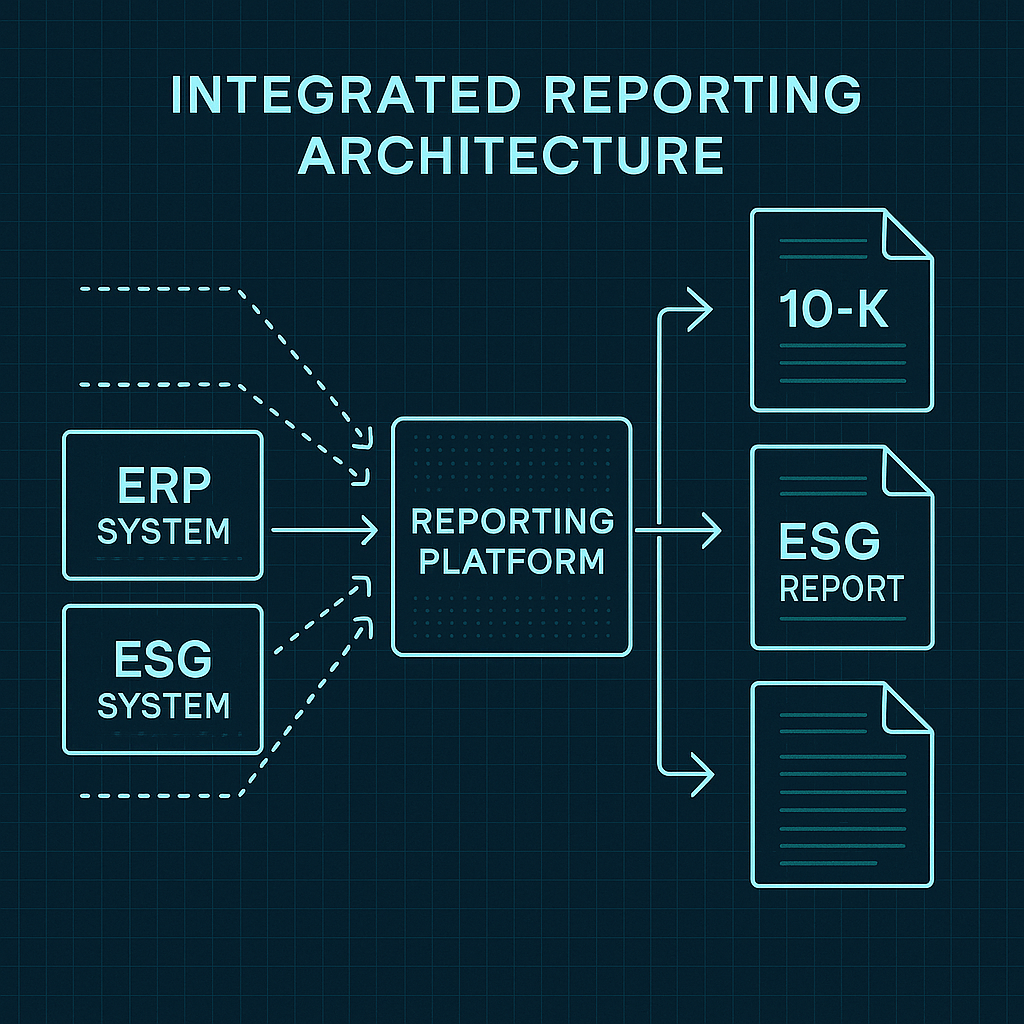
Table of Contents
The Persistent Reporting Disconnect
Why do so many organizations, armed with powerful financial systems, still struggle with the “last mile” of reporting? It’s a question that consistently surfaces in enterprise technology discussions. We’ve explored the foundational challenge of integrated reporting, where a dangerous gap separates audited data from the final narrative presented to stakeholders. The process often devolves into a high-risk scramble of Word documents and spreadsheets, creating a significant disconnect between the system of record and the report of record.
A perspective forged through years of navigating real-world enterprise integrations suggests this isn’t a failure of individual tools, but a failure of architecture. The solution requires a fundamental shift in thinking: from producing documents to architecting a controlled, interconnected reporting ecosystem.
Core Architectural Principles
Effective integrated reporting architectures are built on a few core principles that address the root causes of this disconnect. A foundational principle is the separation of content and format. In this model, the narrative text, financial figures, and ESG data points are managed as structured content, independent of their final presentation in a PDF or an SEC filing. This allows for content to be reused and updated from a single source, ensuring consistency across multiple reports.
Another key principle is component-based design. Instead of building monolithic reports, a modern architecture treats each table, chart, and paragraph as a reusable “block” with its own data connections, approval workflow, and version history. This modular approach provides both flexibility and control.
Perhaps most critically, the architecture must support data-narrative linking. Every number that appears in a sentence must maintain a live, auditable link back to its source data in a financial system or data warehouse. This active link is what transforms a static document into a dynamic, reliable report.
Technology Enablers for a Cohesive Architecture
While the principles are architectural, their implementation relies on specific technology capabilities. Platforms like Workiva, for instance, are purpose-built for this challenge, but the underlying capabilities can be understood more broadly.
Key technology enablers include:
A Governed Data Hub: A central repository where financial and non-financial data is connected and controlled. This isn’t just a data store; it’s a workspace with granular permissions and audit trails.
Workflow Orchestration: Tools that manage the complex sequence of review, approval, and commentary across multiple departments (finance, legal, sustainability, investor relations).
Direct Data Integration: Robust connectors that can pull data directly from source systems (ERPs, EPMs, data warehouses) without manual export-import cycles. This ensures data freshness and integrity.
The most effective implementations I’ve observed don’t just purchase a tool; they integrate it thoughtfully into their existing enterprise architecture, making it the definitive platform for all external reporting.
Governance and Workflow for Integrated Reporting
Technology alone can’t solve this. A successful integrated reporting architecture requires a corresponding evolution in governance and workflow.
This means establishing clear ownership for each component of the report, not just the final document. Who owns the narrative for the MD&A? Who is responsible for the final validation of the ESG metrics? These roles must be explicitly defined.
It also requires parallel, collaborative workflows. Instead of a linear, sequential process (finance finishes, then sends to legal, then to IR), a modern platform allows for simultaneous work within a controlled environment. This dramatically accelerates the reporting cycle.
Finally, the audit trail must be comprehensive. Every change, every comment, every approval needs to be captured. This level of transparency is essential for satisfying both internal controls and external auditors.
The Strategic Payoff
The benefits of a well-architected integrated reporting system extend beyond efficiency. It enhances accuracy, reduces compliance risk, and shortens reporting cycles. Insights distilled from numerous complex system deployments indicate that organizations with such systems can often reduce their external reporting cycle time by 20-30%.
But more strategically, it allows finance and leadership teams to spend less time on the mechanics of report assembly and more time on the quality of the analysis and the clarity of the narrative. It transforms reporting from a frantic, administrative burden into a strategic communication function. Isn’t that the ultimate goal?
For more on my professional background and insights, feel free to connect with me on LinkedIn.